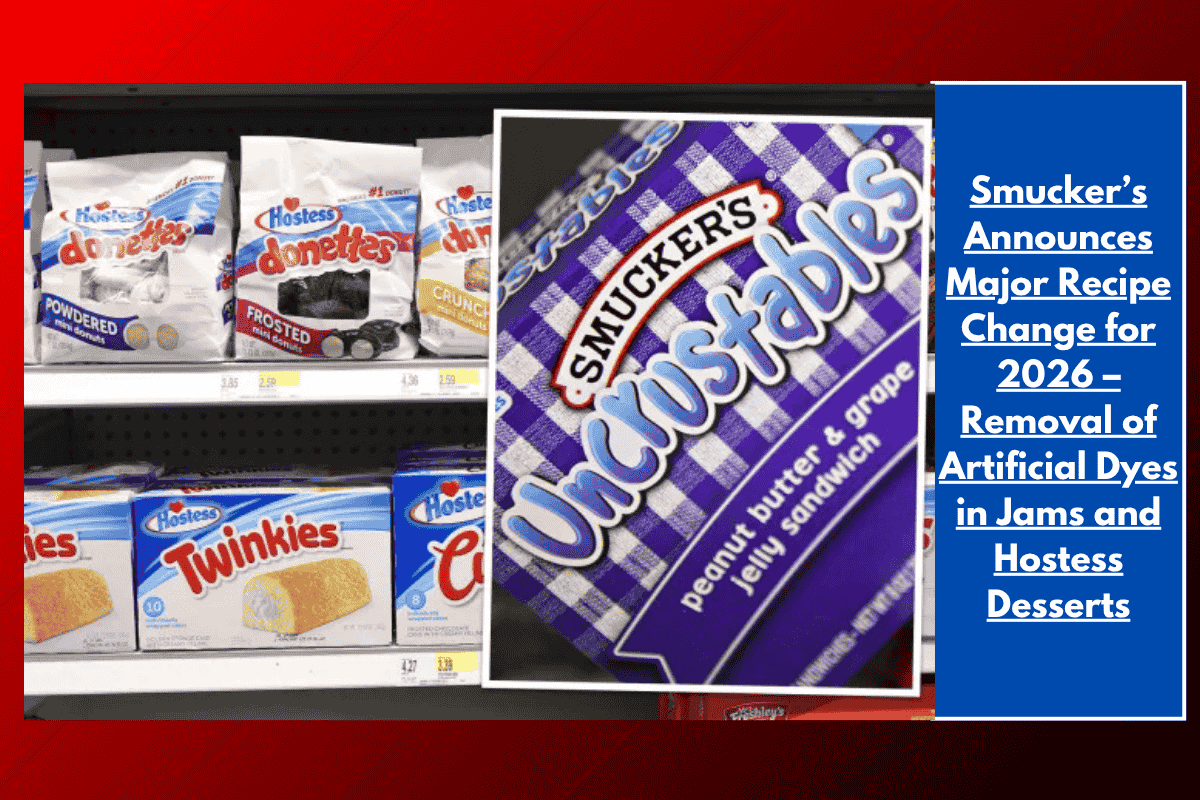The J.M. Smucker Company, one of America’s largest food manufacturers, has announced a significant change to its product recipes by 2026. The company will remove artificial food dyes, such as Red 40 and Yellow 5, from many of its popular products, including its sugar-free jams, ice cream toppings, and select Hostess snacks like Twinkies and Snoballs.
Smucker’s Commitment to Natural Ingredients
Smucker’s, best known for its fruit spreads, is joining a growing list of food companies that are moving away from synthetic FD&C (Food, Drug, and Cosmetic) dyes. The company made the announcement on Friday, emphasizing its commitment to evolving its product line to meet consumer demand for healthier, more natural options.
Smucker’s CEO, Mark Smucker, explained, “Our commitment to remove FD&C colors from our sugar-free fruit spreads, ice cream toppings, and sweet baked goods products represents the latest example of our desire to evolve and our ability to continue to innovate to deliver on the expectations of our consumers.”
While Smucker’s has already removed synthetic dyes from many of its products, such as its popular Uncrustables sandwiches, the upcoming changes will affect its sugar-free fruit spreads, ice cream toppings, and some Hostess brand snacks. For example, Twinkies, which currently contain Red 40 and Yellow 5, will see these artificial dyes removed by 2026.
The Impact on Hostess Products
Hostess desserts, like Twinkies and Snoballs, will be directly impacted by the reformulation. Twinkies, a beloved American snack, has traditionally been made with artificial colors, such as Red 40 and Yellow 5, while Snoballs contain Red 40 Lake. Smucker’s decision to remove these ingredients is in line with a broader industry trend to make food products healthier and more natural, especially in response to growing consumer concerns over food additives.
The Move Is Part of a Broader Industry Shift
Smucker’s isn’t the only major food company making changes to its recipes. Other food giants, such as Nestlé, Conagra Brands (parent company of Duncan Hines), Kraft Heinz, General Mills, and McCormick, have all announced plans to eliminate FD&C artificial colors from their products. These efforts reflect a larger industry push to reduce synthetic ingredients in food products, driven by growing consumer demand for transparency and natural ingredients.
Additionally, food and beverage companies are aligning their practices with federal efforts to review food chemicals more rigorously. The Food and Drug Administration (FDA) has started to review food chemicals already in use, including synthetic dyes, which have been linked to potential health risks, especially for children.
A Federal Push for Safer Ingredients
The shift away from artificial dyes is also part of a federal effort to protect public health. Health and Human Services Secretary Robert F. Kennedy Jr. recently emphasized the dangers of petroleum-based synthetic dyes, which offer no nutritional benefits and pose potential health risks. The FDA’s decision to ban Red 3 dye from food, a move that followed its previous ban in cosmetics, highlights the growing concern about these additives.
Kennedy stated, “Some food producers have been feeding Americans petroleum-based chemicals without their knowledge or consent for too long.” He added that these “poisonous compounds” pose “real, measurable dangers” to children’s health and development.
Changes at Sam’s Club and Other Retailers
This push for cleaner ingredients has extended to retailers like Sam’s Club, which is overhauling its home brand items by the end of the year to remove synthetic dyes. This move signals the retail industry’s growing commitment to healthier products.
Smucker’s decision to remove artificial dyes from its products by 2026 reflects a broader movement in the food industry toward cleaner, healthier ingredients. As more companies join this trend, it’s clear that consumer demand for natural foods is shaping the future of the food manufacturing sector. Meanwhile, the federal government’s focus on eliminating harmful synthetic dyes from the food supply is likely to accelerate these changes across the industry.














